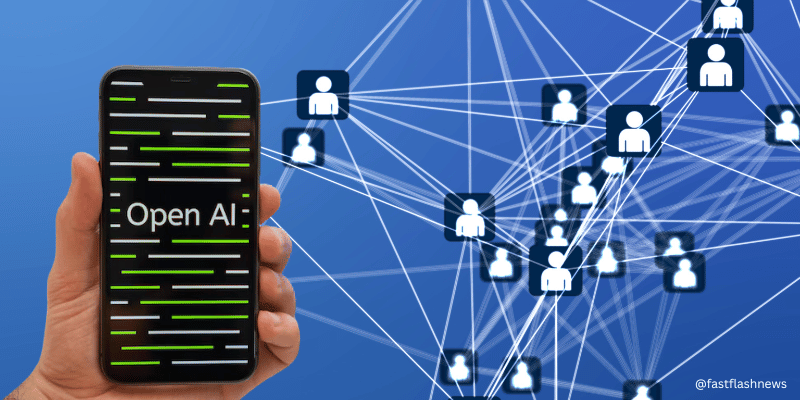Google’s Project Astra demonstrated an AI chatbot that used a smartphone camera to describe the scene in real time.
The keynote event at Google I/O 2024 allowed the firm to present its remarkable portfolio of artificial intelligence (AI) models and technologies, which it has been working on for quite some time. In the following months, the majority of the newly announced features will be available as public previews. However, the most intriguing technology showcased during the event will not be available for a long. Google DeepMind created Project Astra, a new AI assistant that demonstrated real-time, computer vision-based AI interaction.
Real-time Computer Vision-Based AI
Project Astra is an AI model capable of doing incredibly complicated jobs for current chatbots. Google’s production-ready models are trained using its biggest and most powerful AI models. Demis Hassabis, co-founder and CEO of Google DeepMind, highlighted Project Astra as an example of an AI model that is presently being trained. He introduced it by saying, “Today, we have some exciting new progress to discuss about the future of AI helpers, which we are calling Project Astra. For a long time, we intended to create a general AI agent that would be really useful in everyday life.”
Hassabis also detailed a set of conditions that the corporation has established for such AI agents. They must comprehend and respond to the complicated and dynamic real-world environment, as well as recall what they observe in order to construct context and take action. Furthermore, it must be teachable and personal in order to master new abilities and converse without delay.
With that statement, the DeepMind CEO showed a demo video of a user holding up a smartphone with the camera app open. The user speaks to an AI, and the AI answers quickly, addressing a variety of vision-related questions. The AI could also use visual information to provide context and answer relevant queries, which required generative skills. For example, the user presented the AI some crayons and asked it to describe them using alliteration. Without latency, the chatbot adds, “Creative crayons color cheerfully.” They certainly make colorful sculptures.”
But it wasn’t all. Further into the video, the user gestures to a window through which several buildings and highways can be seen. When questioned about the neighborhood, the AI instantly provides the accurate response. This demonstrates the AI model’s computer vision processing capabilities, as well as the enormous visual dataset required to train it. Perhaps the most intriguing instance occurred when the AI was questioned about the user’s spectacles. They showed on the screen for only a few seconds before disappearing. Nonetheless, the AI could remember its location and direct the user to it.
FAQ’s
What is Google’s Project Astra?
- Google’s Project Astra is an ambitious initiative aimed at revolutionizing satellite internet connectivity.
- It involves the development of a new constellation of small, low-earth orbit (LEO) satellites designed to provide high-speed internet access to underserved and remote areas around the world.
- Project Astra aims to leverage advanced satellite technology and innovative engineering solutions to deliver reliable, low-latency internet connectivity to users globally.
How does Project Astra differ from existing satellite internet services?
- Project Astra aims to differentiate itself from existing satellite internet services by focusing on improving speed, reliability, and affordability.
- Unlike traditional geostationary satellites, which orbit at higher altitudes and suffer from higher latency, Project Astra’s LEO satellites operate at lower altitudes, resulting in lower latency and faster data transmission speeds.
- Additionally, Project Astra aims to leverage advancements in satellite design, launch technology, and ground infrastructure to reduce costs and make satellite internet more accessible to a broader range of users.
When will Project Astra be available to consumers?
- Google has not provided specific details regarding the timeline for Project Astra’s deployment and commercial availability.
- However, the project is still in its early stages of development, and significant milestones, such as satellite design, testing, and regulatory approvals, must be achieved before widespread deployment can occur.
- Google is expected to provide updates on Project Astra’s progress as the initiative advances toward commercialization.
What are the potential benefits of Google’s Project Astra?
Project Astra has the potential to bring several significant benefits, including:
Expanded Access:
Project Astra could extend high-speed internet access to underserved and remote areas where traditional terrestrial infrastructure is impractical or cost-prohibitive.
Improved Connectivity:
By reducing latency and increasing data transmission speeds, Project Astra could enhance the quality and reliability of internet connectivity for users in both urban and rural regions.
Economic Development:
Access to high-speed internet can stimulate economic growth, empower entrepreneurship, and improve educational opportunities in underserved communities, contributing to socioeconomic development.
Disaster Response:
Project Astra’s resilient satellite network could provide critical communication infrastructure during natural disasters or emergencies, enabling faster response and recovery efforts.




